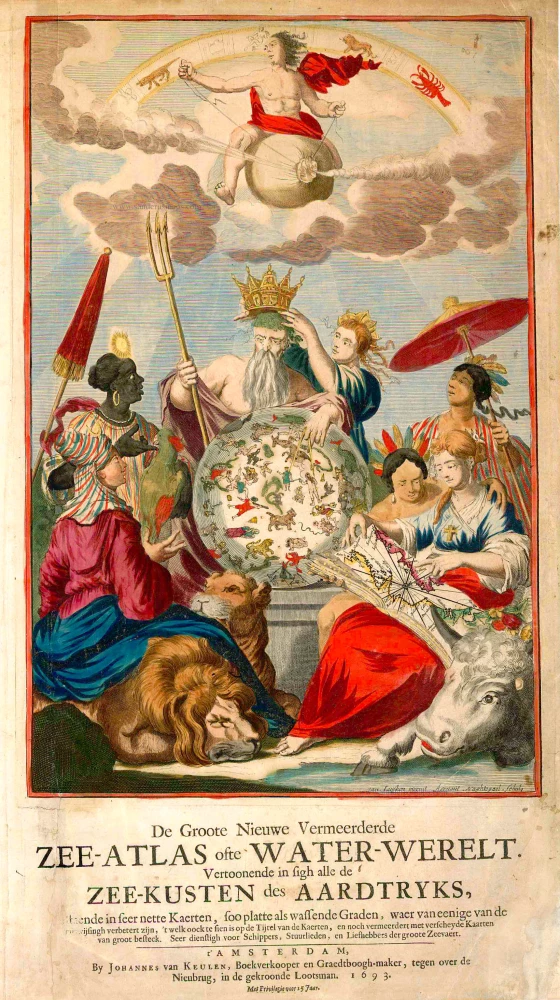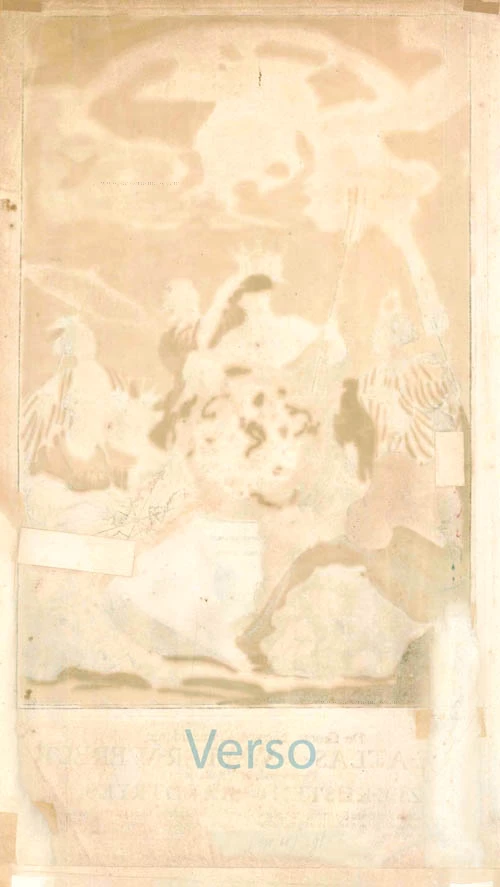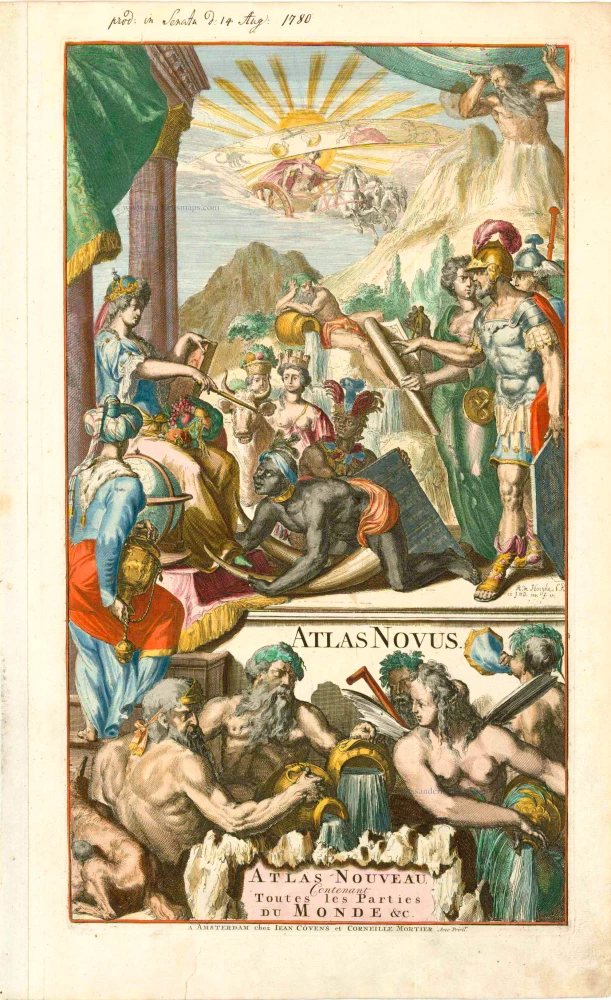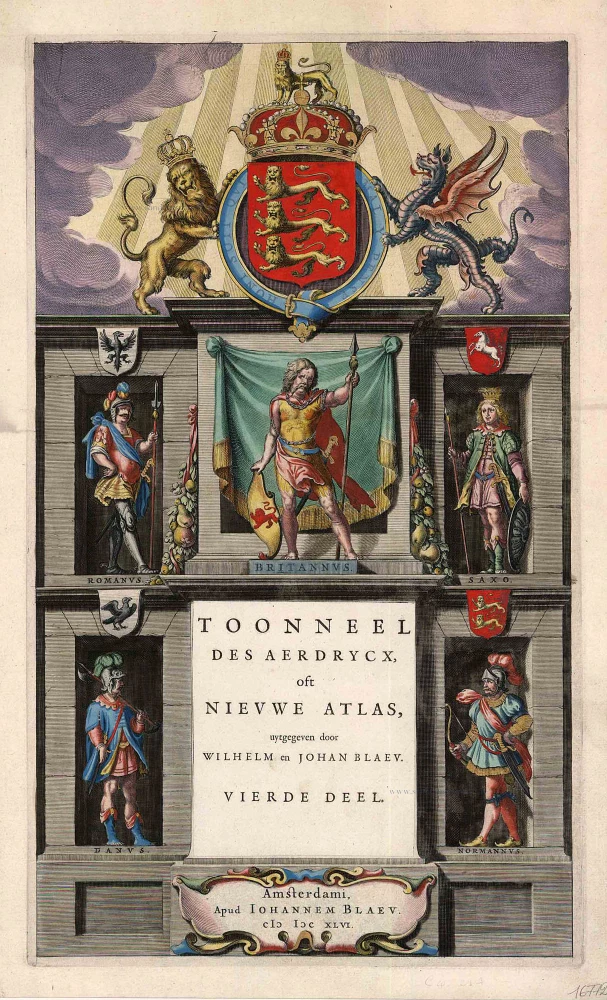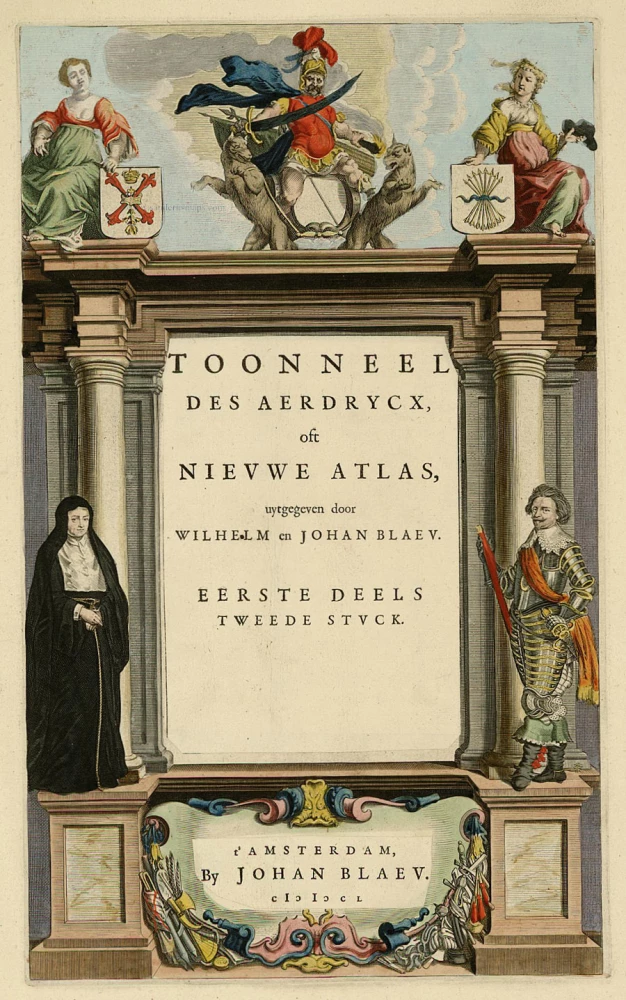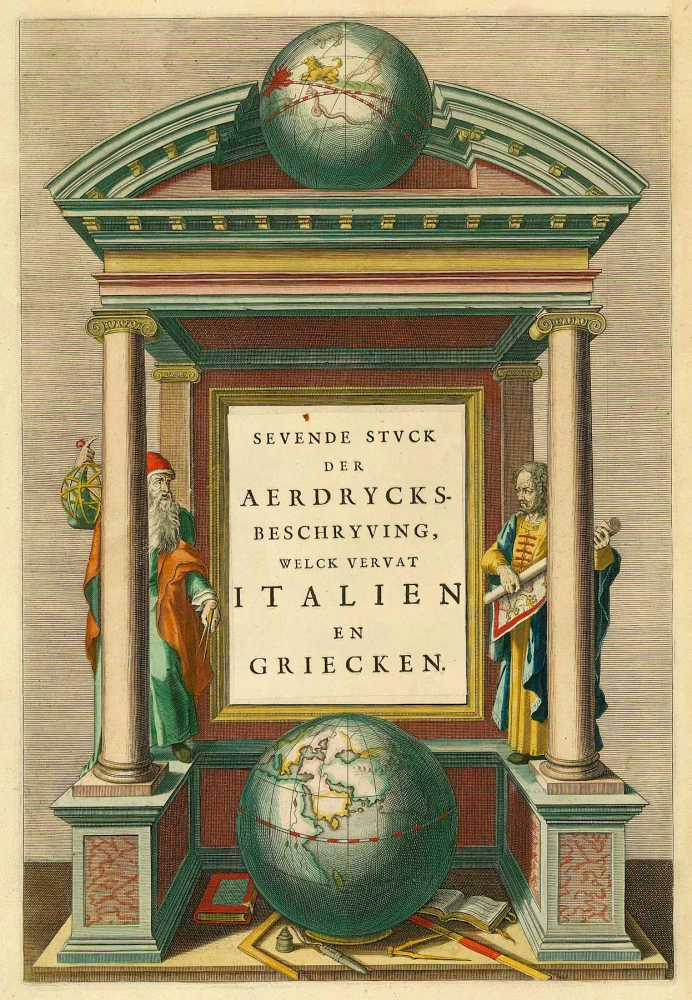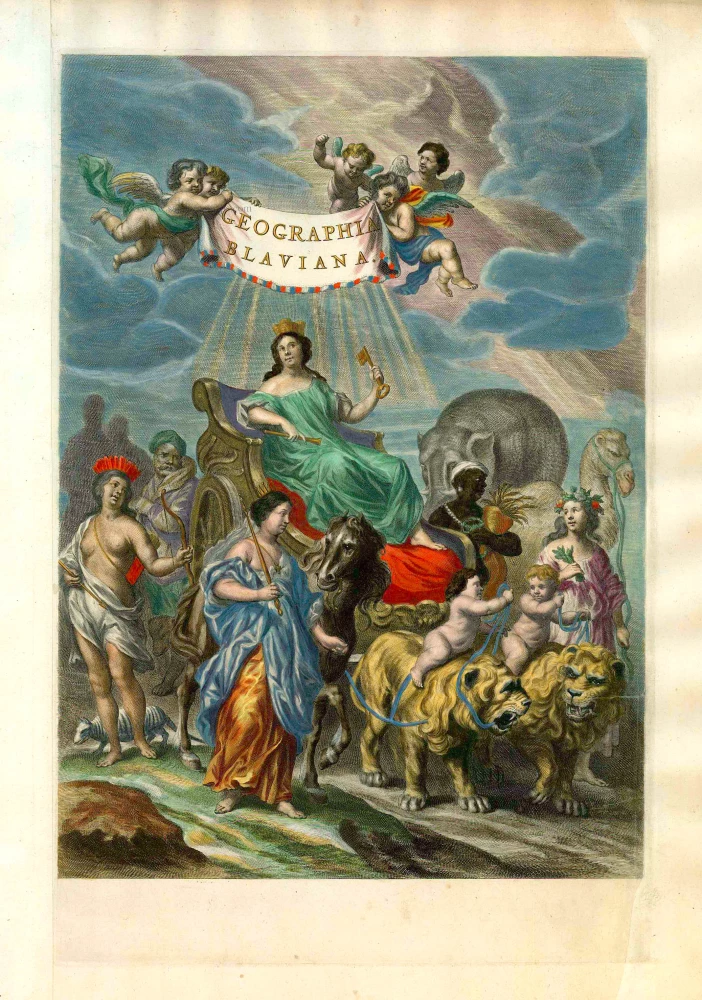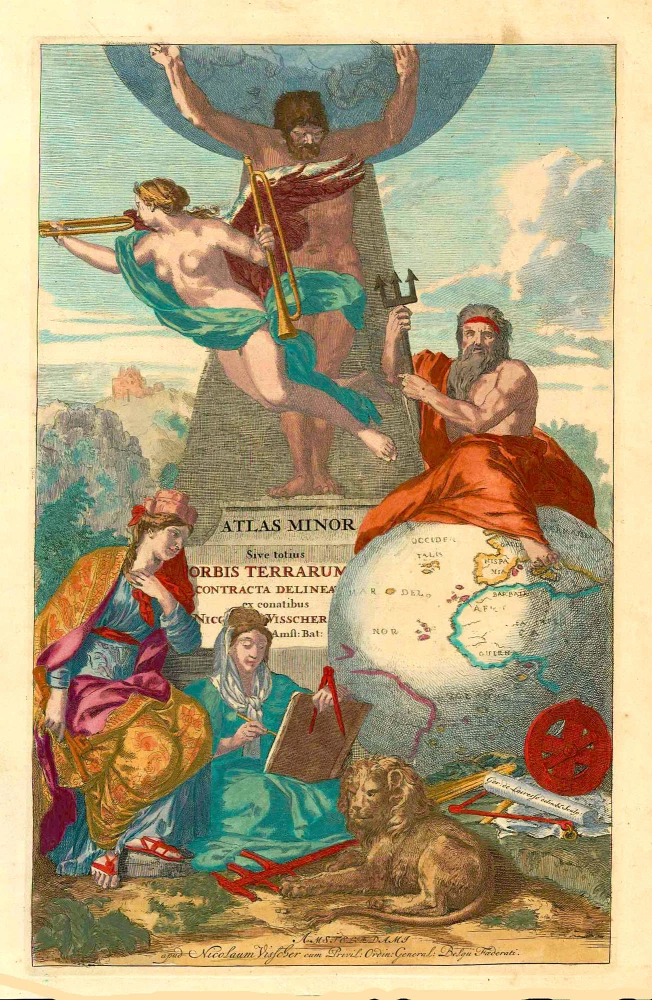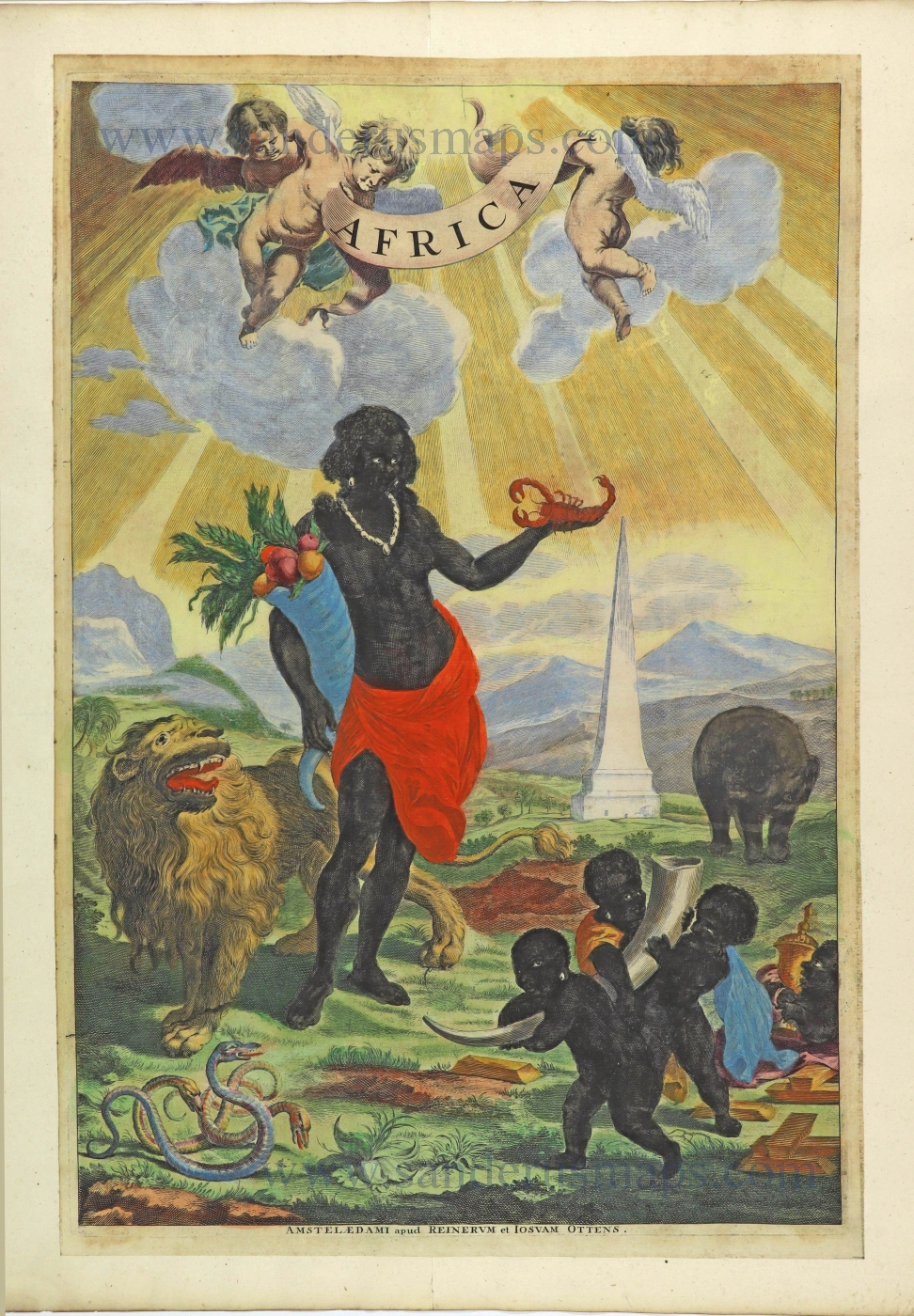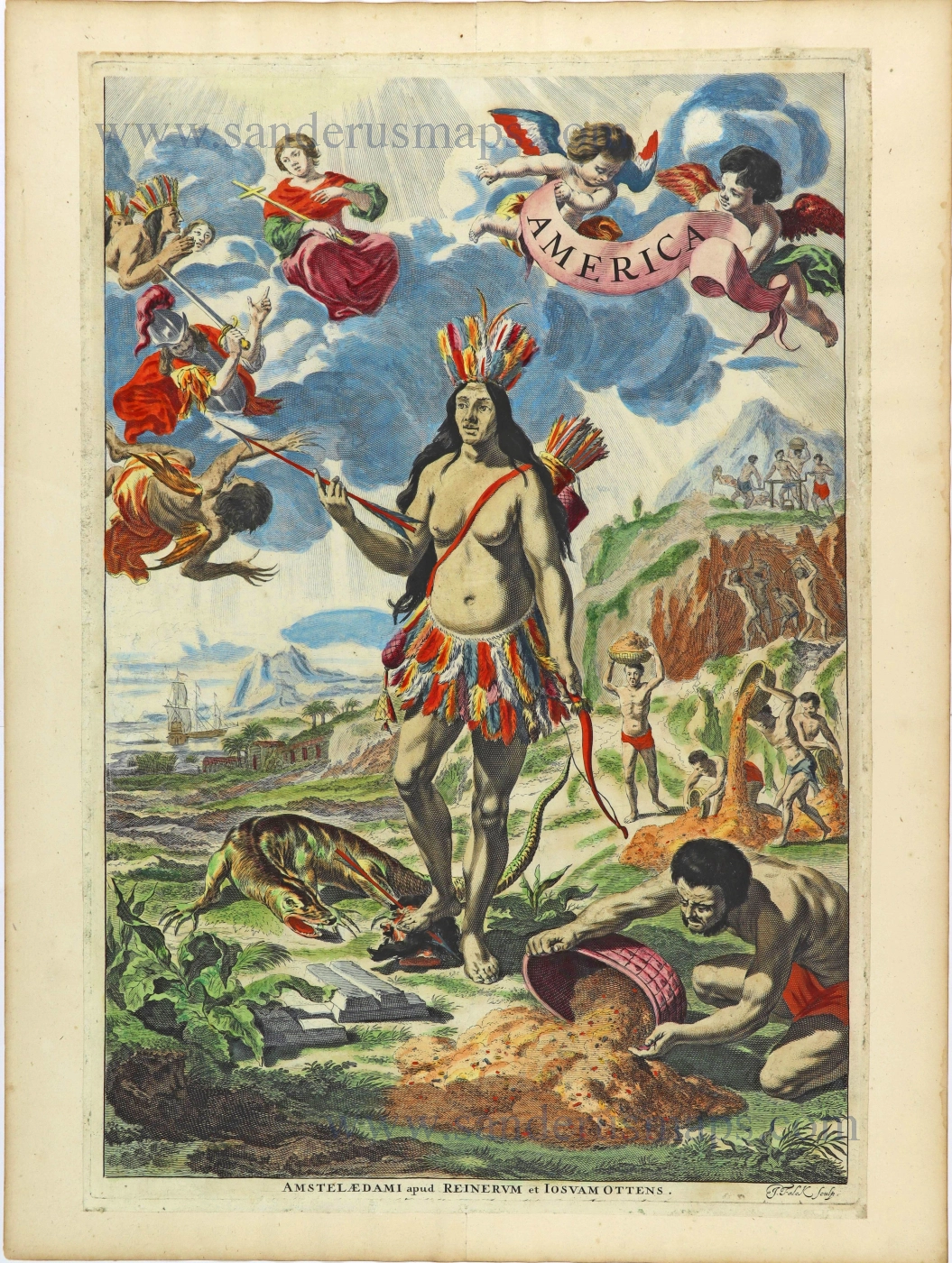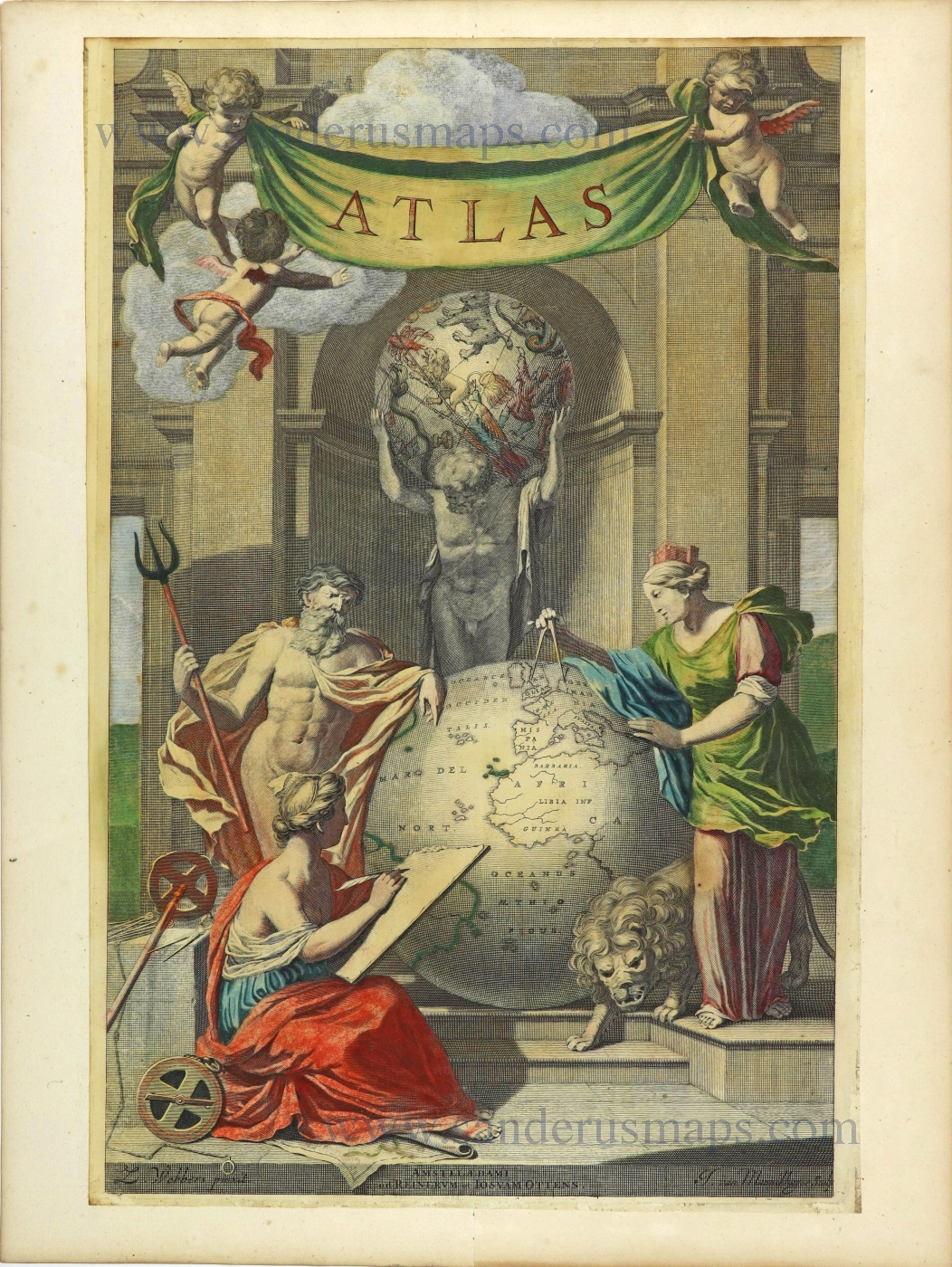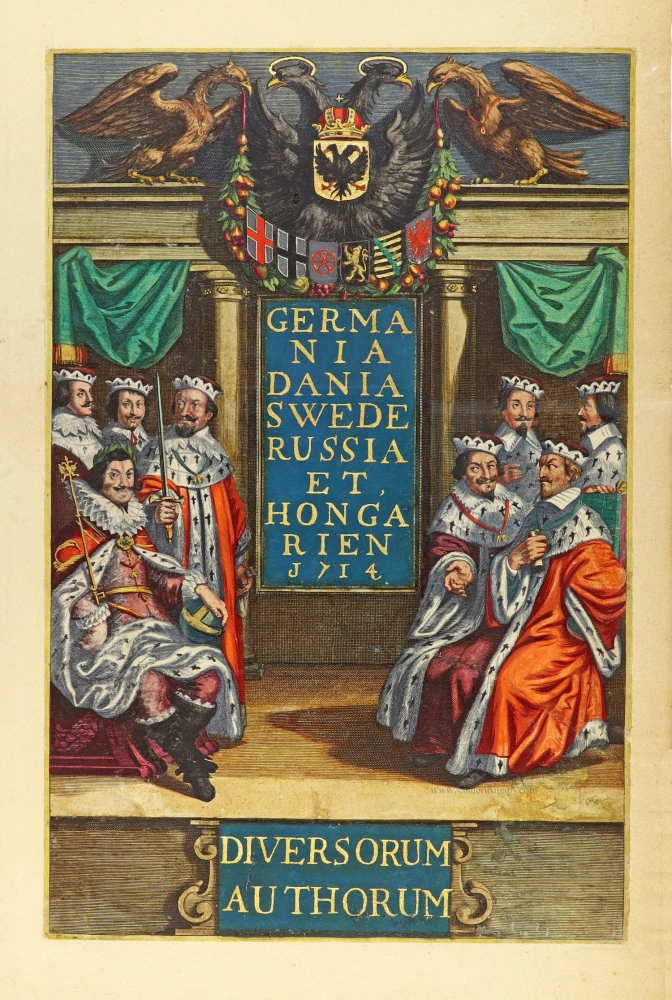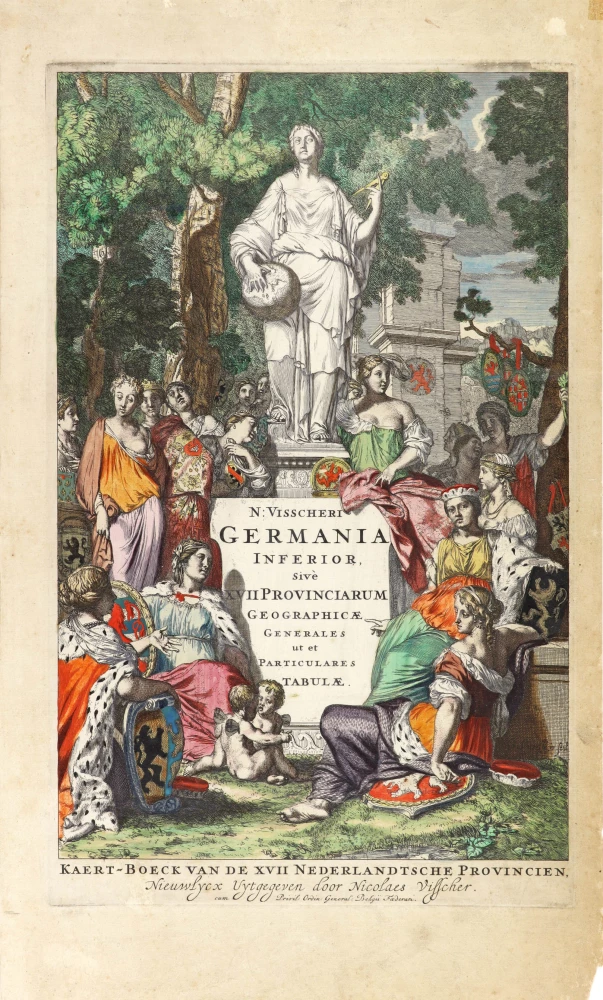Scarce. Heightened in gold
Johannes Van Keulen, sea atlas title page. 1693
The principal feature is the coronation of the sea-god Neptune standing behind a giant celestial sphere with a trident in one hand and a pair of dividers in the other. Around the globe are six female figures. One is placing on his head a fine crown composed of the decorative sterns of six ships; the others represent the continents, with the two figures on the right with feathered head-pieces representing North and South America separately. Europe wears a crucifix, is accompanied by her mentor bull, and is studying a sea atlas open at a chart of the English Channel. To the left, Asia is accompanied by a lion and a lioness and Africa by a parrot.
In the skies above Neptune's head is a most unusual feature - Aeolus, the god of winds, sits astride a large inflated bladder or sack, steered by control of its narrow orifice. Perhaps the first (unintentional) demonstration of jet-engined propulsion! (Shirley)
The House of Van Keulen
For more than two centuries, the chart makers firm of Van Keulen was established in the house with the name of “De Gekroonde Lootsman” (The Crowned Pilot). In 1678, the founder of the firm, Johannes I Van Keulen (1634-1689), registered with the Amsterdam booksellers’ guild. He had enlisted the aid of the well-known Mathematical Practitioner Claas Janz Vooght in the preparation of his nautical publications. In 1680 he published the first edition of the Zee-Atlas with 40 charts, all issued for the first time. In the short period of four years, they produced the five volumes of the Nieuwe Groote Ligtende Zee-Fakkel (1681-85). His acquisition of the stock of the bookseller Hendrik Doncker was an essential factor in the development of the firm.
In 1678 a son, Gerard Van Keulen (1678-1726), was born out of Johannes’s first marriage. This son was endowed with talent. He was a skilful engraver and proficient in mathematics and navigational science. Gerard was responsible for establishing the scientific basis of the firm of Van Keulen. In 1714 he was appointed to the office of hydrographer to the Dutch East India Company. The Van Keulens remained chart makers to the East India Company until the Company’s liquidation.
With the introductions to the Zee-Fakkel and Zee-Atlas, Gerard van Keulen gave a new impetus to the firm. Unfortunately, he did not live long, dying when he was 49. The business was carried on by his widow Ludwina Konst. Shortly before Gerard’s death, his son Johannes II had entered the bookseller’s guild, and in 1726 he assumed the management of the firm, though his mother retained her financial interests in the business.
Johannes II Van Keulen (1704-1755) is known in particular for his publication in 1753 of a sixth volume of the Zee-Fakkel, the volume containing the charts of the route to the East Indies.
Johannes II had two sons; they joined the firm as partners in 1757. A considerable number of books appeared in the period 1778-1801. New issues of the Zee-Fakkel again saw the light. The firm flourished under different names until 1885.
De Groote Nieuwe Vermeerderde Zee-Atlas ofte Water-Werelt. Vertoonende in sigh alle de Zee-Kusten des Aardtryks, ...
Item Number: 26447 Authenticity Guarantee
Category: Antique maps > Curiosities
Title page of Johannes Van Keulen's Zee-Atlas of 1693.
Designer: Jan Luycken
Engraver: Aernout Naghtegael
First edition: 1680
Copper engraving, printed on paper.
Size (not including margins): 51 x 27.5cm (19.9 x 10.7 inches)
Verso: Blank
Condition: Original coloured, heightened in gold. The right bottom corner and the tear in the left bottom reinforced.
Condition Rating: A
References: Shirley (Title pages), #65.
From: Van Keulen J., De Groote Nieuwe Vermeerderde Zee-Atlas ofte Waterwerelt. Amsterdam, 1693.
The principal feature is the coronation of the sea-god Neptune standing behind a giant celestial sphere with a trident in one hand and a pair of dividers in the other. Around the globe are six female figures. One is placing on his head a fine crown composed of the decorative sterns of six ships; the others represent the continents, with the two figures on the right with feathered head-pieces representing North and South America separately. Europe wears a crucifix, is accompanied by her mentor bull, and is studying a sea atlas open at a chart of the English Channel. To the left, Asia is accompanied by a lion and a lioness and Africa by a parrot.
In the skies above Neptune's head is a most unusual feature - Aeolus, the god of winds, sits astride a large inflated bladder or sack, steered by control of its narrow orifice. Perhaps the first (unintentional) demonstration of jet-engined propulsion! (Shirley)
The House of Van Keulen
For more than two centuries, the chart makers firm of Van Keulen was established in the house with the name of “De Gekroonde Lootsman” (The Crowned Pilot). In 1678, the founder of the firm, Johannes I Van Keulen (1634-1689), registered with the Amsterdam booksellers’ guild. He had enlisted the aid of the well-known Mathematical Practitioner Claas Janz Vooght in the preparation of his nautical publications. In 1680 he published the first edition of the Zee-Atlas with 40 charts, all issued for the first time. In the short period of four years, they produced the five volumes of the Nieuwe Groote Ligtende Zee-Fakkel (1681-85). His acquisition of the stock of the bookseller Hendrik Doncker was an essential factor in the development of the firm.
In 1678 a son, Gerard Van Keulen (1678-1726), was born out of Johannes’s first marriage. This son was endowed with talent. He was a skilful engraver and proficient in mathematics and navigational science. Gerard was responsible for establishing the scientific basis of the firm of Van Keulen. In 1714 he was appointed to the office of hydrographer to the Dutch East India Company. The Van Keulens remained chart makers to the East India Company until the Company’s liquidation.
With the introductions to the Zee-Fakkel and Zee-Atlas, Gerard van Keulen gave a new impetus to the firm. Unfortunately, he did not live long, dying when he was 49. The business was carried on by his widow Ludwina Konst. Shortly before Gerard’s death, his son Johannes II had entered the bookseller’s guild, and in 1726 he assumed the management of the firm, though his mother retained her financial interests in the business.
Johannes II Van Keulen (1704-1755) is known in particular for his publication in 1753 of a sixth volume of the Zee-Fakkel, the volume containing the charts of the route to the East Indies.
Johannes II had two sons; they joined the firm as partners in 1757. A considerable number of books appeared in the period 1778-1801. New issues of the Zee-Fakkel again saw the light. The firm flourished under different names until 1885.

